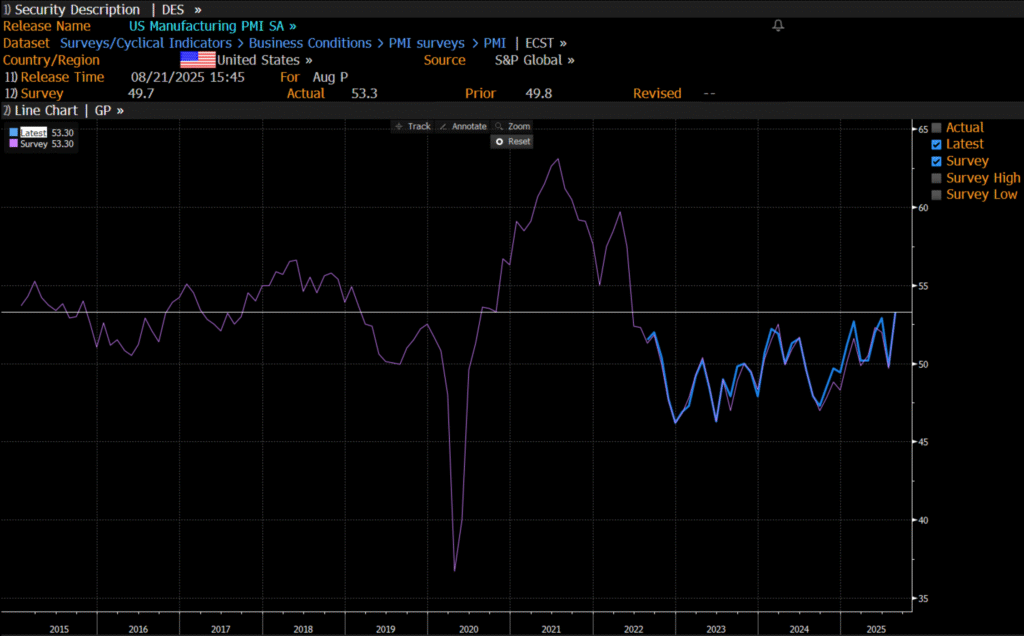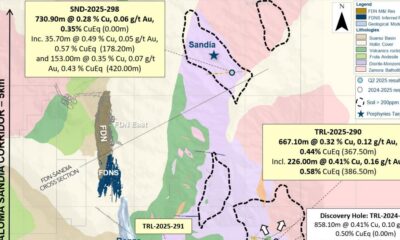Analys
Down to $61.1/b with EM and metals. Time to buy

 Over the past week Brent crude has sold down 3% along with EM equities (-3.5%), Industrial metals (-2.8%) plus some headwind from a 0.5% stronger USD. While not bullish to the $80/b in terms of the 2018 horizon, the OPEC+ decision last week is still supportive. Further inventory draw down will lead to a steeper Brent backwardation spot price premium to forward contracts while further US crude oil production growth is likely to lead to a yet wider Brent to WTI crude price spread. As such a Brent crude spot price delivery in the range of $60-65/b seems reasonable for 2018. Brent crude year 2018 is currently trading at $60.6/b and 2019 at $58.5/b. We expect the Brent crude front month to head towards $65-67/b in not too long.
Over the past week Brent crude has sold down 3% along with EM equities (-3.5%), Industrial metals (-2.8%) plus some headwind from a 0.5% stronger USD. While not bullish to the $80/b in terms of the 2018 horizon, the OPEC+ decision last week is still supportive. Further inventory draw down will lead to a steeper Brent backwardation spot price premium to forward contracts while further US crude oil production growth is likely to lead to a yet wider Brent to WTI crude price spread. As such a Brent crude spot price delivery in the range of $60-65/b seems reasonable for 2018. Brent crude year 2018 is currently trading at $60.6/b and 2019 at $58.5/b. We expect the Brent crude front month to head towards $65-67/b in not too long.
There never was much of a bull rally following OPEC+’ firm and credible announcement last Thursday for maintaining production cuts to the end of 2018. Brent crude has instead sold off 3% w/w since last Wednesday, the day before the OPEC meeting. The sell-off has in our view little to do with oil specifics and much more to do with broad based drivers. In perspective EM equities have sold off 3.5% while the USD index has increased 0.5% with all commodity sub-indices down between 1.3% and 2.8%. All the major industrial metals were down with copper loosing 3.1% and nickel loosing 6.2%. So Brent crude loosing 3% with this kind of backdrop has little to do with oil specifics.
We still perceive OPEC+’ announcement last Thursday as an overall very strong and credible message of lasting market management. “We will not allow the inventories to rise back up”; “Production cuts will be reversed gradually” and “We’ll drive inventories down another 150 mb (vs Sep OECD level)”.
The message was however not a message of “We’ll cut so much that we’ll drive the market back to $80/b”. The market may very well drive back up to $80/b eventually, but not because OPEC+ places it there deliberately. The lack of this kind of message was maybe why the Brent crude oil price did not roll on higher after OPEC+ message but rather followed general market trends (EM and metals) lower.
In terms of hopes for a further strong bullish drive from OPEC+ the only weakness in the announcement last week was the goal of another 150 mb lower. The reason for this is that the reference point is OECD inventories from September 2017. Since then we have seen weekly data decline by close to 70 mb with probably another 20 mb lower before the end of year. In addition it will only drive OECD inventories down to the ‘2013-2017 five year average’ rather than the normal conditions of ‘2010-2014’ from before inventories started to rise.
We’ll thus be pretty close to the inventory goal already at the end of 2017 and for sure by mid-2018. And 1Q18 will not be like 1Q17 when OECD inventories jumped 82 mb from Dec-16 to Jan-17 due to elevated OPEC production in 4Q16. This time we have disciplined production by OPEC+ in 4Q17 with little reason to expect an unusual large jump in OECD inventories into January.
OPEC+’ message last week was measured and not a message of aiming for the sky in terms of prices. As inventory targets are reached they will gradually wind down cuts. Thus even if they promised to keep cuts to end of 2018 they are unlikely to over-deliver in terms of inventory target. As this target is likely to be firmly in their hands by mid-2018 we expect OPEC+ wind down production cuts in 2H18.
2018 is not going to be a year where Libya and Nigeria are going to increase production and thus counter production cuts from the rest of the OPEC+ group as was the case in 2017. Not because they have accepted a cap under the new agreement, but because they have taken out the upside production capacity in the short term. Venezuela on the other hand is likely to decline further with an extension of its current 3m y/y decline rate of -257 kb/d. Iran is likely to move sideways.
The main downside price concern for the oil market in 2018 is primarily connected to the coming tapering in bond purchases by Central Banks as well as the unavoidable debt-deleveraging in China.
Kind regards
Bjarne Schieldrop
Chief analyst, Commodities
SEB Markets
Merchant Banking
Analys
OPEC+ in a process of retaking market share

Oil prices are likely to fall for a fourth straight year as OPEC+ unwinds cuts and retakes market share. We expect Brent crude to average USD 55/b in Q4/25 before OPEC+ steps in to stabilise the market into 2026. Surplus, stock building, oil prices are under pressure with OPEC+ calling the shots as to how rough it wants to play it. We see natural gas prices following parity with oil (except for seasonality) until LNG surplus arrives in late 2026/early 2027.

Oil market: Q4/25 and 2026 will be all about how OPEC+ chooses to play it
OPEC+ is in a process of unwinding voluntary cuts by a sub-group of the members and taking back market share. But the process looks set to be different from 2014-16, as the group doesn’t look likely to blindly lift production to take back market share. The group has stated very explicitly that it can just as well cut production as increase it ahead. While the oil price is unlikely to drop as violently and lasting as in 2014-16, it will likely fall further before the group steps in with fresh cuts to stabilise the price. We expect Brent to fall to USD 55/b in Q4/25 before the group steps in with fresh cuts at the end of the year.

Natural gas market: Winter risk ahead, yet LNG balance to loosen from 2026
The global gas market entered 2025 in a fragile state of balance. European reliance on LNG remains high, with Russian pipeline flows limited to Turkey and Russian LNG constrained by sanctions. Planned NCS maintenance in late summer could trim exports by up to 1.3 TWh/day, pressuring EU storage ahead of winter. Meanwhile, NE Asia accounts for more than 50% of global LNG demand, with China alone nearing a 20% share (~80 mt in 2024). US shale gas production has likely peaked after reaching 104.8 bcf/d, even as LNG export capacity expands rapidly, tightening the US balance. Global supply additions are limited until late 2026, when major US, Qatari and Canadian projects are due to start up. Until then, we expect TTF to average EUR 38/MWh through 2025, before easing as the new supply wave likely arrives in late 2026 and then in 2027.
Analys
Manufacturing PMIs ticking higher lends support to both copper and oil

Price action contained withing USD 2/b last week. Likely muted today as well with US closed. The Brent November contract is the new front-month contract as of today. It traded in a range of USD 66.37-68.49/b and closed the week up a mere 0.4% at USD 67.48/b. US oil inventory data didn’t make much of an impact on the Brent price last week as it is totally normal for US crude stocks to decline 2.4 mb/d this time of year as data showed. This morning Brent is up a meager 0.5% to USD 67.8/b. It is US Labor day today with US markets closed. Today’s price action is likely going to be muted due to that.

Improving manufacturing readings. China’s manufacturing PMI for August came in at 49.4 versus 49.3 for July. A marginal improvement. The total PMI index ticked up to 50.5 from 50.2 with non-manufacturing also helping it higher. The HCOB Eurozone manufacturing PMI was a disastrous 45.1 last December, but has since then been on a one-way street upwards to its current 50.5 for August. The S&P US manufacturing index jumped to 53.3 in August which was the highest since 2022 (US ISM manufacturing tomorrow). India manufacturing PMI rose further and to 59.3 for August which is the highest since at least 2022.
Are we in for global manufacturing expansion? Would help to explain copper at 10k and resilient oil. JPMorgan global manufacturing index for August is due tomorrow. It was 49.7 in July and has been below the 50-line since February. Looking at the above it looks like a good chance for moving into positive territory for global manufacturing. A copper price of USD 9935/ton, sniffing at the 10k line could be a reflection of that. An oil price holding up fairly well at close to USD 68/b despite the fact that oil balances for Q4-25 and 2026 looks bloated could be another reflection that global manufacturing may be accelerating.
US manufacturing PMI by S&P rose to 53.3 in August. It was published on 21 August, so not at all newly released. But the US ISM manufacturing PMI is due tomorrow and has the potential to follow suite with a strong manufacturing reading.

Analys
Crude stocks fall again – diesel tightness persists

U.S. commercial crude inventories posted another draw last week, falling by 2.4 million barrels to 418.3 million barrels, according to the latest DOE report. Inventories are now 6% below the five-year seasonal average, underlining a persistently tight supply picture as we move into the post-peak demand season.

While the draw was smaller than last week’s 6 million barrel decline, the trend remains consistent with seasonal patterns. Current inventories are still well below the 2015–2022 average of around 449 million barrels.
Gasoline inventories dropped by 1.2 million barrels and are now close to the five-year average. The breakdown showed a modest increase in finished gasoline offset by a decline in blending components – hinting at steady end-user demand.
Diesel inventories saw yet another sharp move, falling by 1.8 million barrels. Stocks are now 15% below the five-year average, pointing to sustained tightness in middle distillates. In fact, diesel remains the most undersupplied segment, with current inventory levels at the very low end of the historical range (see page 3 attached).
Total commercial petroleum inventories – including crude and products but excluding the SPR – fell by 4.4 million barrels on the week, bringing total inventories to approximately 1,259 million barrels. Despite rising refinery utilization at 94.6%, the broader inventory complex remains structurally tight.
On the demand side, the DOE’s ‘products supplied’ metric – a proxy for implied consumption – stayed strong. Total product demand averaged 21.2 million barrels per day over the last four weeks, up 2.5% YoY. Diesel and jet fuel were the standouts, up 7.7% and 1.7%, respectively, while gasoline demand softened slightly, down 1.1% YoY. The figures reflect a still-solid late-summer demand environment, particularly in industrial and freight-related sectors.


-

 Nyheter4 veckor sedan
Nyheter4 veckor sedanOmgående mångmiljardfiasko för Equinors satsning på Ørsted och vindkraft
-

 Nyheter2 veckor sedan
Nyheter2 veckor sedanMeta bygger ett AI-datacenter på 5 GW och 2,25 GW gaskraftverk
-

 Nyheter4 veckor sedan
Nyheter4 veckor sedanGuld stiger till över 3500 USD på osäkerhet i världen
-

 Analys4 veckor sedan
Analys4 veckor sedanWhat OPEC+ is doing, what it is saying and what we are hearing
-

 Nyheter2 veckor sedan
Nyheter2 veckor sedanAker BP gör ett av Norges största oljefynd på ett decennium, stärker resurserna i Yggdrasilområdet
-

 Nyheter4 veckor sedan
Nyheter4 veckor sedanLyten, tillverkare av litium-svavelbatterier, tar över Northvolts tillgångar i Sverige och Tyskland
-

 Analys2 veckor sedan
Analys2 veckor sedanBrent sideways on sanctions and peace talks
-

 Nyheter3 veckor sedan
Nyheter3 veckor sedanEtt samtal om koppar, kaffe och spannmål










